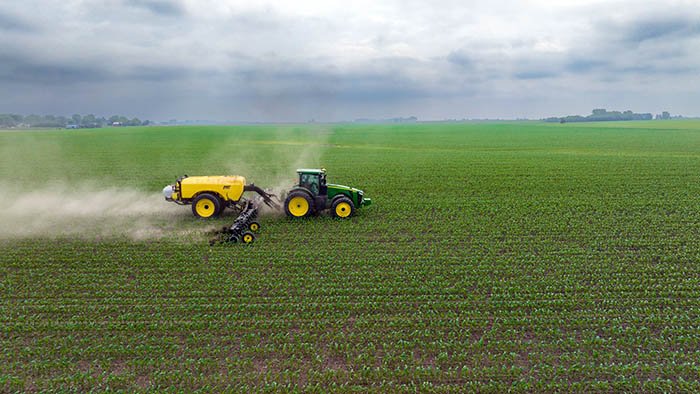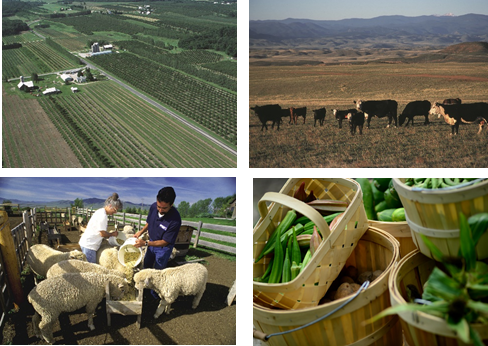Innovations in Agriculture: Smart Farming Techniques for Better Returns
Innovations in Agriculture: Smart Farming Techniques for Better Returns
Blog Article
Enhance Agricultural Productivity With High-Quality Water Soluble Polymers
These polymers provide a range of advantages that can reinvent standard farming techniques, from boosting water retention and performance to optimizing soil structure and nutrient distribution systems. By taking advantage of the power of ingenious polymer solutions, farmers can potentially unlock brand-new paths in the direction of achieving greater plant returns while alleviating environmental influences.

Advantages of Water-Soluble Polymers
Water-soluble polymers supply a wide variety of advantages in farming applications because of their improved water retention residential properties and capability to enhance dirt framework. Agriculture. These polymers, when included in the soil, can substantially increase water holding ability, minimizing the regularity of watering required by crops. By forming a gel-like material when blended with water, water-soluble polymers produce a storage tank that gradually releases dampness to plant origins, making sure a much more constant water during droughts
In addition, these polymers assist in avoiding dirt disintegration by binding dirt fragments together, thereby improving soil structure and security. Enhanced dirt structure enables for far better origin infiltration and aeration, promoting healthier plant development and higher crop yields. Water-soluble polymers also help in nutrient retention by lowering leaching, making sure that vital nutrients stay available to plants for a longer period.
Improved Water Retention and Effectiveness
Enhancing farming water retention and performance with the unification of advanced polymer innovations has actually become a critical emphasis in modern farming methods. Water-soluble polymers play a critical role in enhancing dirt framework, enhancing water infiltration, and lowering water dissipation prices. By creating a slim film on the dirt surface area, these polymers aid to avoid water runoff and enhance the dirt's water-holding ability, making sure that plants have accessibility to an adequate supply of water.
Furthermore, making use of premium water-soluble polymers can significantly reduce the frequency of watering, as they enhance the dirt's capability to preserve wetness for longer durations. This not only preserves water but likewise reduces the energy and labor prices connected with irrigation methods. Furthermore, improved water retention and efficiency result in better nutrient uptake by plants, resulting in improved crop yields and overall farming efficiency.
Enhanced Nutrient Distribution Systems
Offered the considerable influence of high-quality water-soluble polymers on improving water retention and performance in farming, the focus now moves in the direction of maximizing nutrient shipment systems to even more boost plant growth and yield. Enhanced nutrient distribution systems play an essential duty in ensuring that plants obtain the needed nutrients in a kind that is readily offered for uptake, promoting their general health and wellness and efficiency. By incorporating water-soluble polymers into nutrient distribution systems, the performance of nutrient uptake by plants can be substantially enhanced.
One secret benefit of using high-grade water-soluble polymers in nutrient shipment systems is their ability to regulate the release of nutrients, making sure a stable and regulated supply to plants over an extensive duration (Agriculture). This regulated launch device aids avoid nutrient leaching and overflow, consequently optimizing vitamins and mineral usage by plants and reducing ecological influence

Soil Framework Optimization Techniques
Optimizing dirt framework is vital in contemporary agriculture for maximizing plant returns and promoting sustainable land monitoring methods. Dirt structure optimization methods play an important function in making sure that dirt gives an optimal setting for plant development. One essential method is the addition of raw material, such as compost or manure, which helps enhance soil framework by boosting its water-holding ability and nutrient retention.
In addition, exercising minimum tillage or no-till farming can stop dirt compaction and promote the growth of a healthy soil framework. Cover cropping is an additional efficient technique that involves planting plants specifically to boost the dirt and click for more shield, stopping erosion and boosting dirt framework.
Additionally, implementing plant turning approaches can assist break parasite and illness cycles, while likewise boosting soil framework with the differing root structures of different crops. Generally, utilizing these soil structure optimization strategies can bring about increased farming performance, minimized environmental influence, and lasting sustainability in farming practices.
Sustainable Solutions for Plant Returns

To resolve the difficulties of optimizing plant yields while advertising sustainable land monitoring practices, checking out sustainable solutions becomes imperative in modern-day farming. One lasting option for enhancing plant returns is the use of precision agriculture techniques.
Moreover, promoting plant rotation learn the facts here now and cover cropping can aid preserve soil wellness, decrease disintegration, and boost nutrient biking, ultimately adding to higher returns with time. Integrated parasite management strategies likewise play an essential function in sustainable crop production by decreasing the dependence on chemical pesticides and promoting all-natural pest control techniques.
Additionally, spending in study and advancement for creating drought-resistant crop ranges and climate-resilient farming practices can aid minimize the effect of environment modification on agriculture while making certain regular yields despite environmental difficulties. By embracing these lasting services, farmers can attain greater plant yields while safeguarding the health and wellness of the land for future generations.
Verdict
In verdict, making use of premium water-soluble polymers in agriculture supplies various benefits such as enhanced water retention, improved nutrient shipment systems, and maximized soil framework. By executing lasting options for plant returns, farmers can substantially increase farming Source productivity and effectiveness. Agriculture. Water-soluble polymers offer a ecologically friendly and cost-efficient approach to enhance the general performance of farming methods, resulting in much better outcomes for both farmers and the environment
These polymers supply a variety of benefits that can revolutionize standard farming techniques, from improving water retention and efficiency to maximizing dirt framework and nutrient distribution systems.Additionally, these polymers assist in protecting against dirt disintegration by binding dirt bits together, consequently enhancing soil structure and stability. By developing a slim movie on the dirt surface, these polymers assist to prevent water drainage and enhance the soil's water-holding capability, ensuring that plants have access to a sufficient water supply.
Dirt framework optimization techniques play an important role in guaranteeing that dirt supplies an optimal atmosphere for plant growth.In verdict, the use of high-quality water-soluble polymers in farming uses many benefits such as better water retention, boosted nutrient delivery systems, and enhanced soil framework.
Report this page